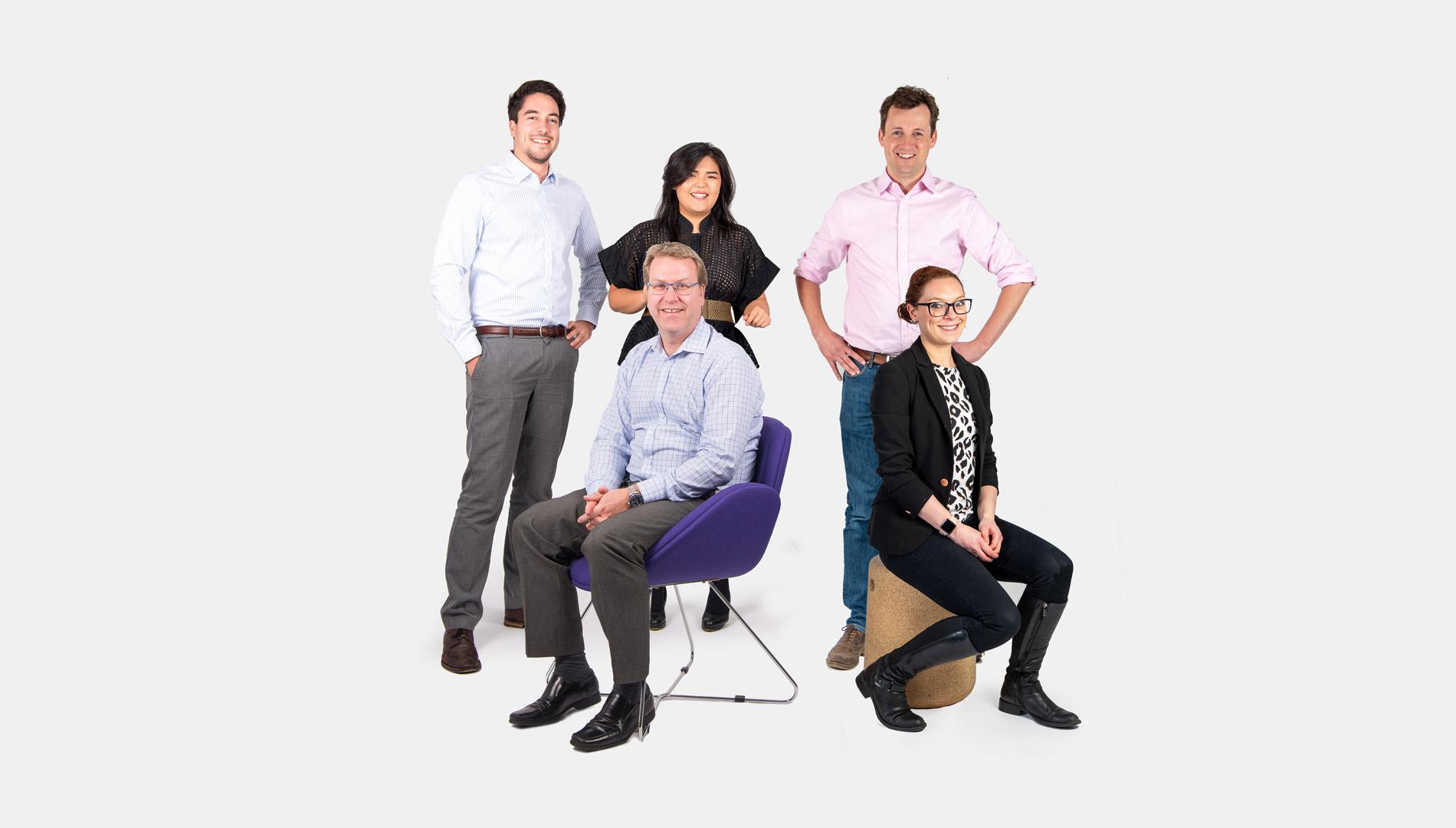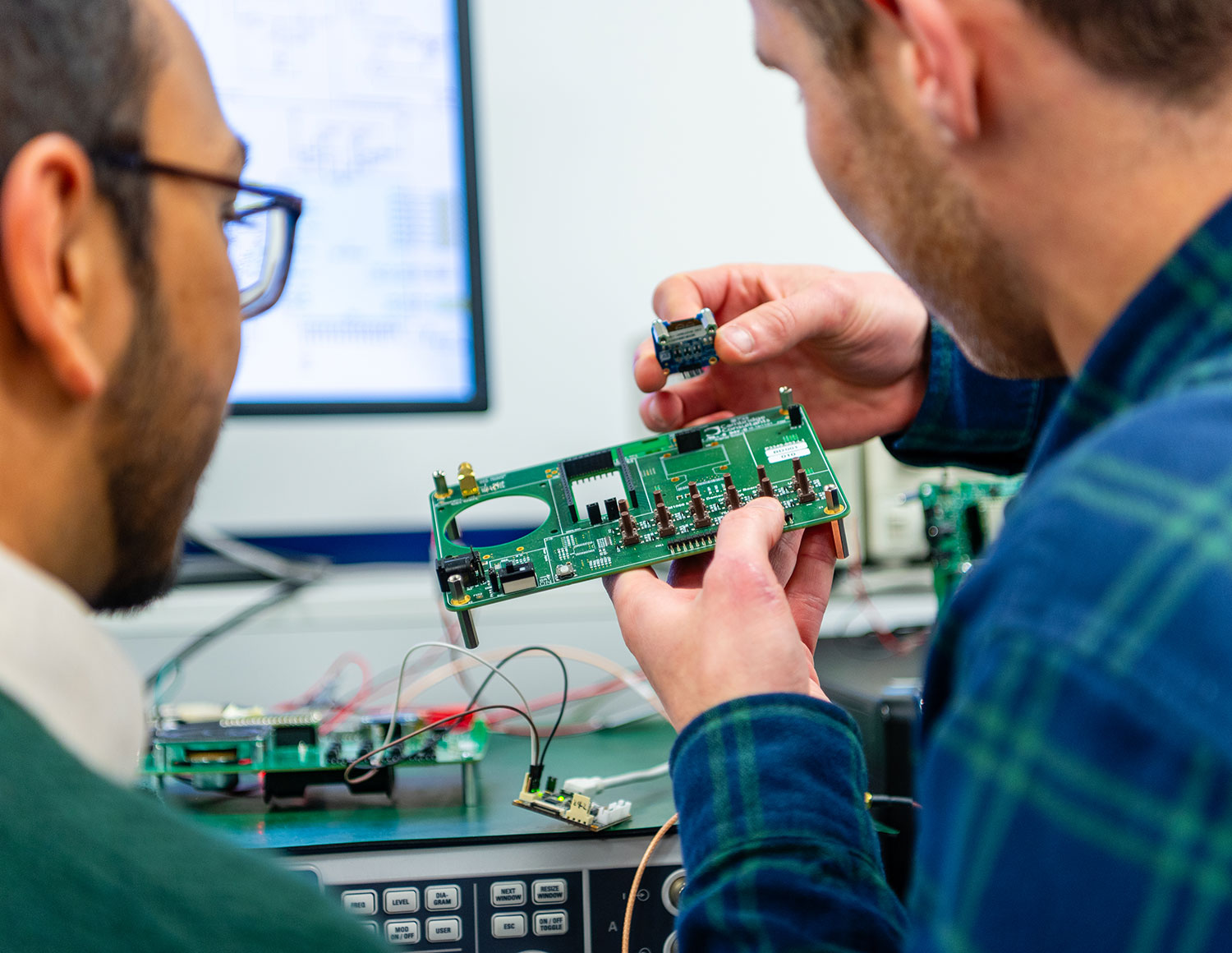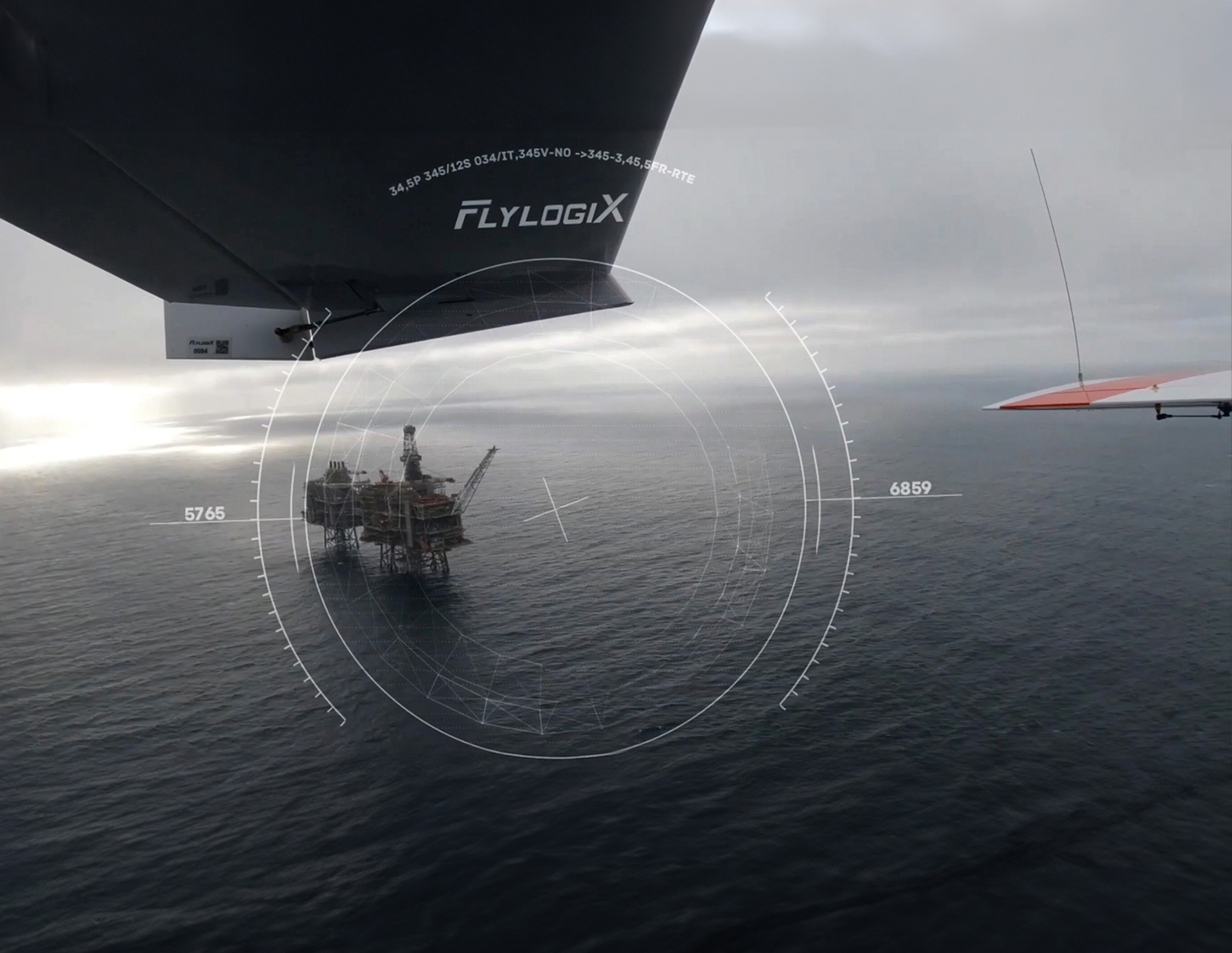Client story
With a global vision to ‘Inspire the Next’, Hitachi is ambitious in its desire to deliver innovation that will answer society’s challenges.
We were invited to help advance Hitachi’s vision by anticipating a future world where connected home appliances and human symbiotic robots transform the way we live our lives.
Futuristic ‘concepts for living’
Hitachi’s Vision 2025 is a bold, future-positioning roadmap intended to strengthen its credentials for disruptive innovation and global market leadership. Driving its development are Kizashi – the ‘future signs’ related to social issues such as increasing urbanization, resource depletion and the aging global society.
Our consultancy work was carried out in 2016 and was compressed into a time frame of just eight weeks. Teams of individuals from three continents contributed to the output of the project: a series of futuristic ‘concepts for living’.
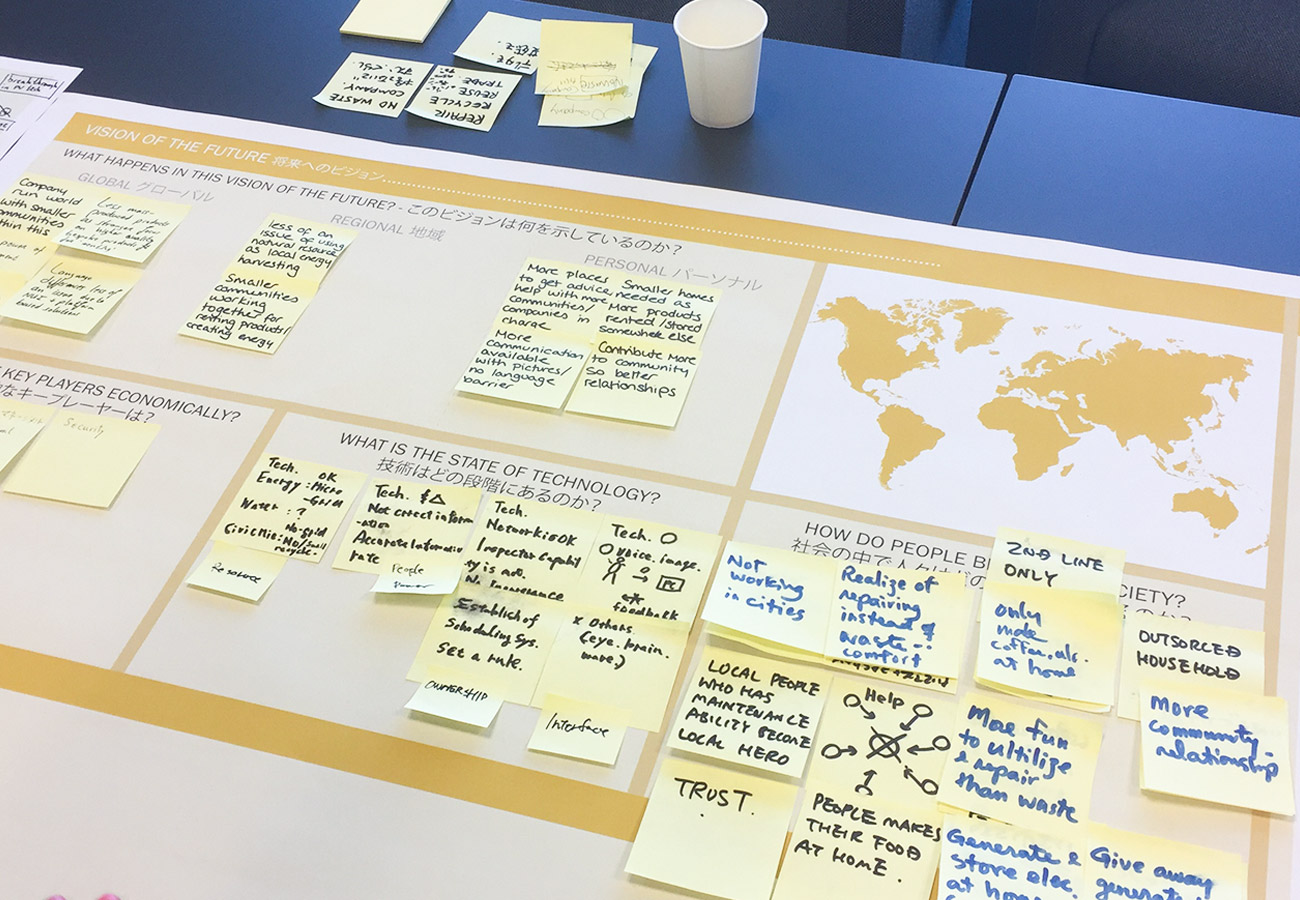
Connected appliances & robotics
Our brief from Hitachi was rooted in simple commercial reality. The home appliance market is crowded and increasingly homogenous. Brands face a huge task to differentiate and compete, let alone justify premium pricing.
Our opportunity was to fashion the building blocks that would allow Hitachi to shape an inspiring competitive positioning through connected appliances and symbiotic robotics. With the Japanese government promoting its super smart ‘Society 5.0’ concept, Hitachi’s ambition was to illustrate future visions that ‘go beyond smart’.
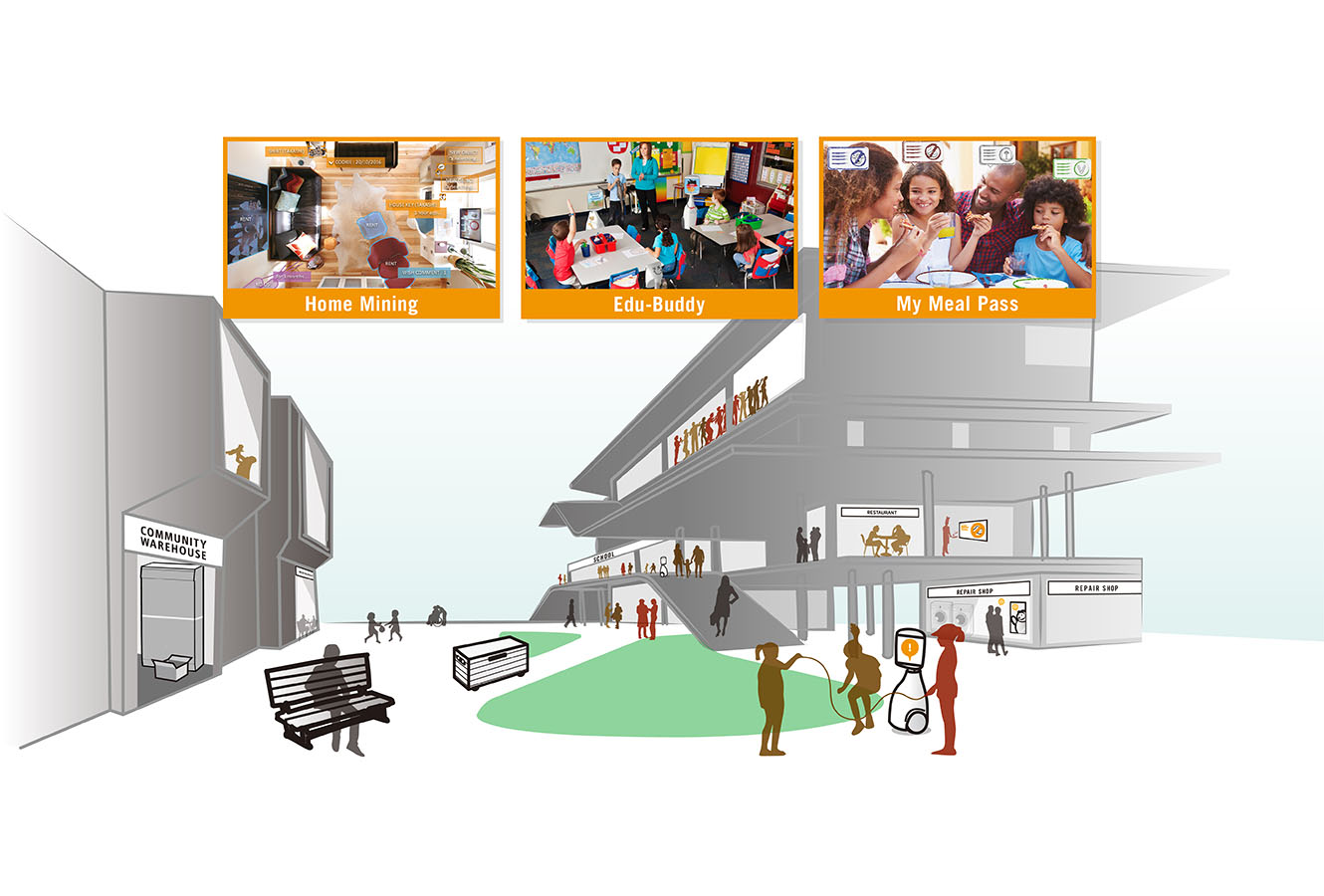
Anticipating future worlds
The work encompassed trend research and a pair of week-long workshops which generated futuristic concepts based around two visions of the future. The first was named ‘beyond sharing’, where the free exchange of goods and services between people ensures liberation from ownership. The second was ‘beyond safety’, where a culture of watching out for neighbors eliminates anxiety.
From those, six futuristic concepts were chosen to help inspire our visions. Each was enthusiastically received by Hitachi, which launched a dedicated department – Hitachi Vision Design – to develop the concepts into product prototyping.
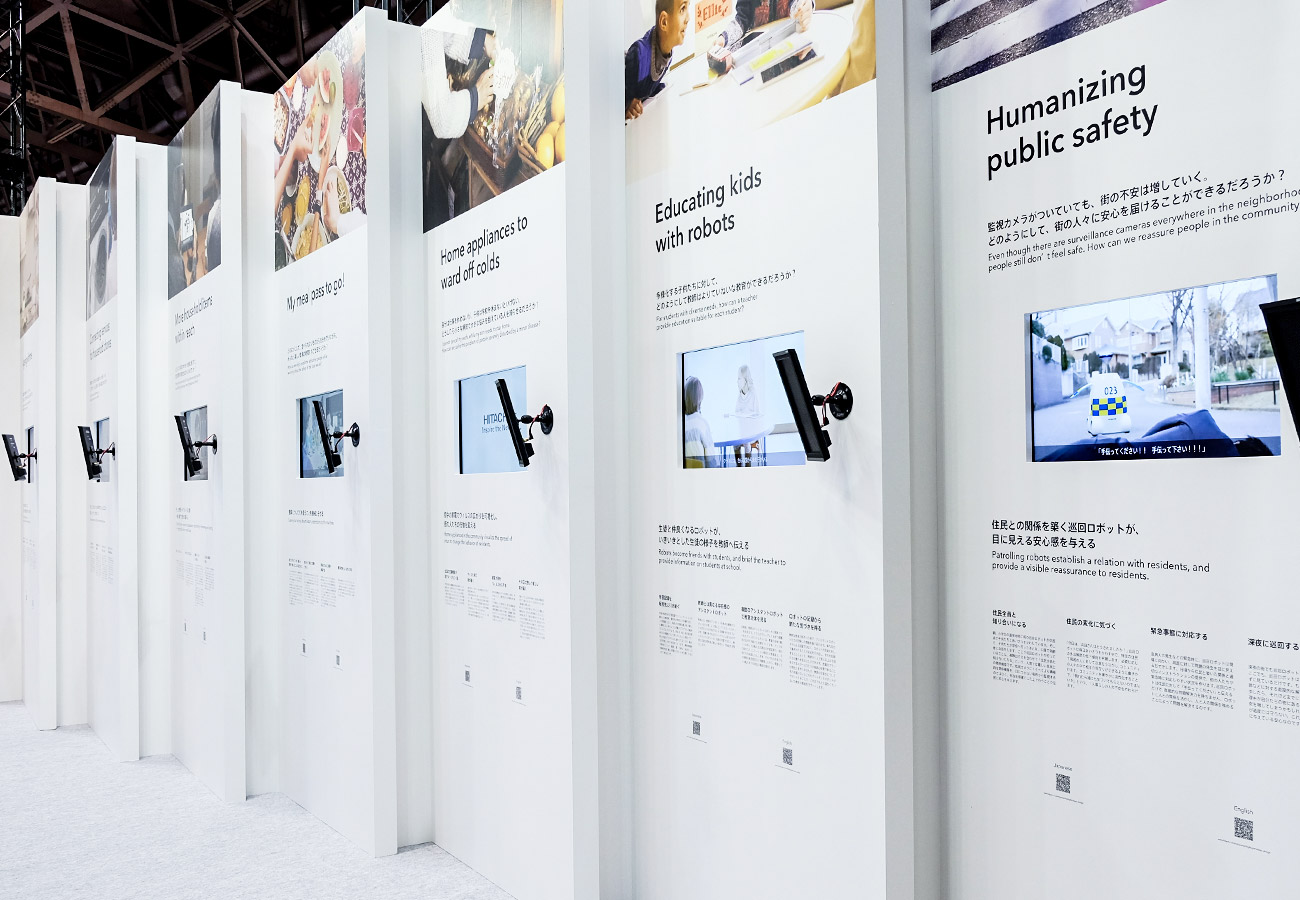
Inspired to push boundaries
The Hitachi design team progressed with bold confidence, inspired to push boundaries from a strong conceptual footing.
Top management shared outputs from the project at the Davos World Economic Forum and made presentations at expos such as CEBIT and CEATEC. Particularly well received were the materials created to inspire and motivate employees as well as customers.
Transforming society
Connected home appliances and human symbiotic robots have the potential to transform society for the better. This thought was central to the development of the concepts. They include ‘Aging with Me’, which imagines a home environment for dementia sufferers.
Connected appliances and robots work together to provide monitoring, detection, emotional support and prevention of cognitive decline through intervention, medication and conversation.
The challenge
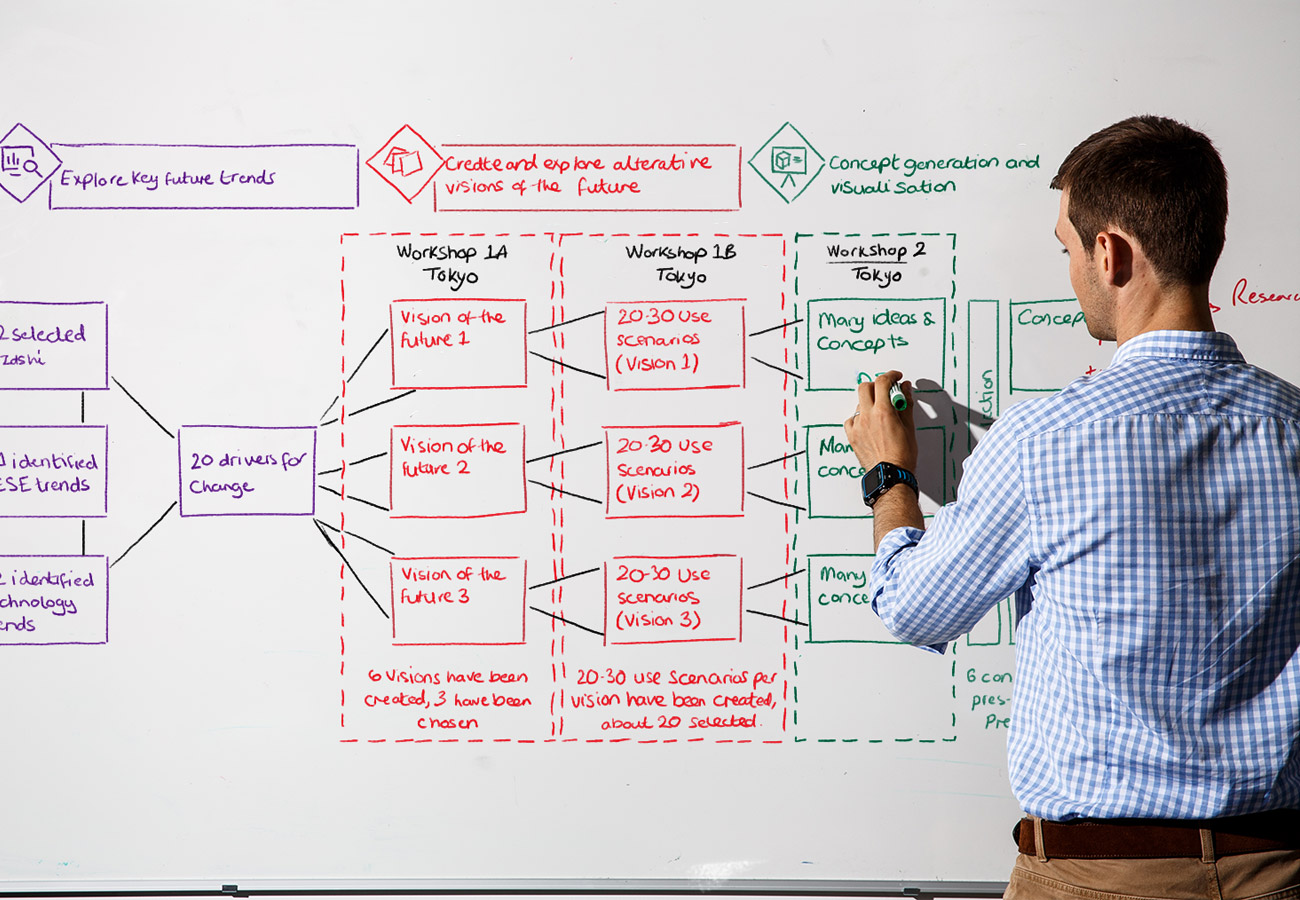
Unique & relevant skills
We were uniquely placed to meet the very specific challenges of the project, which were heightened by the immovable eight-week deadline. With a proven methodology, a strong skillset that negated the need for Hitachi to recruit new staff, and a very good understanding of their business, we hit the ground running.
The strengths of the Hitachi R&D team in Japan were complemented by our European and US expertise, underpinned by our keen knowledge of the Japanese market.
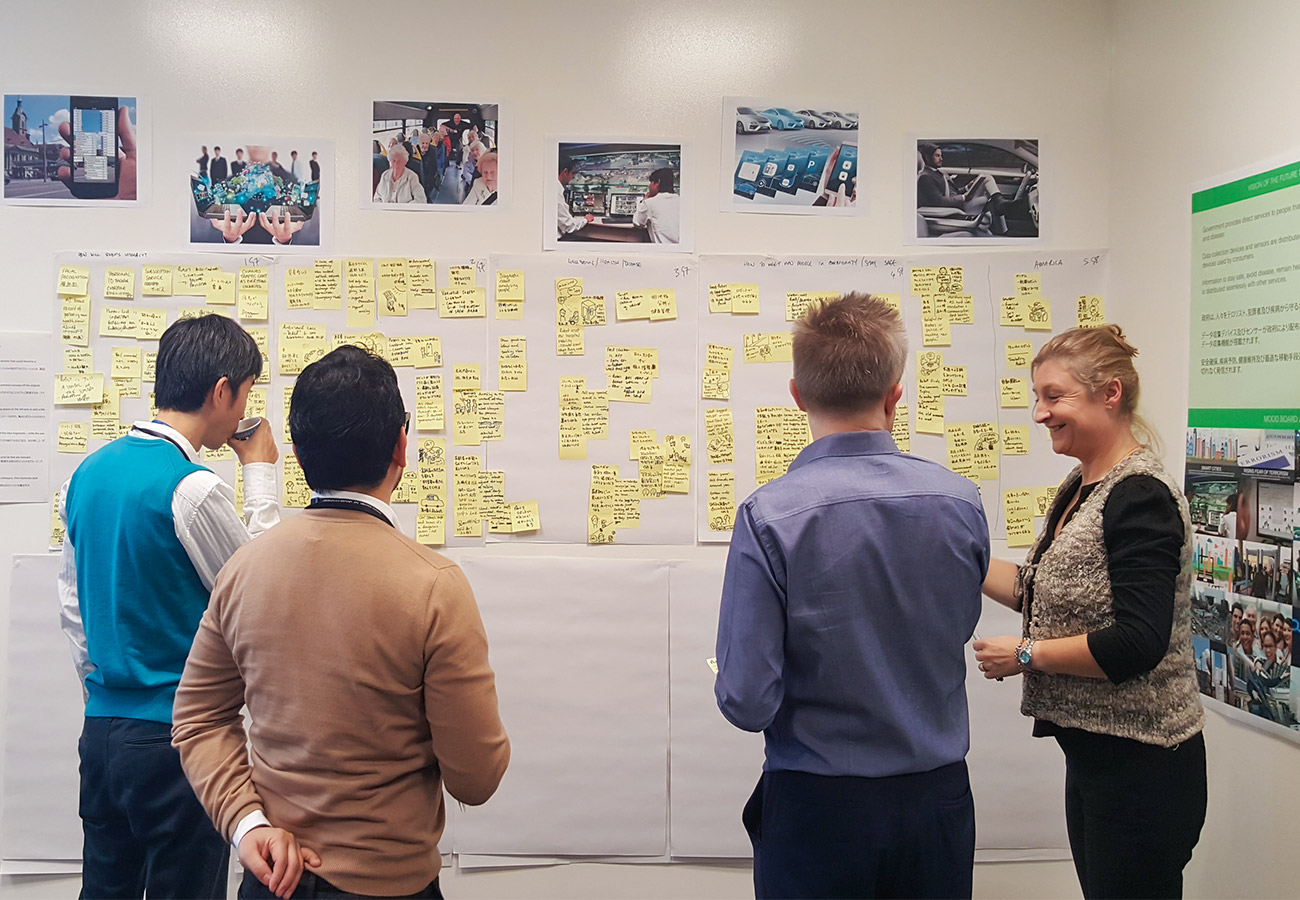
Close collaboration
We worked at speed, propelled by close collaboration with the Hitachi team and the rapid progress that’s possible when our unique blend of technical expertise and project facilitation works in tandem.
We implemented a multi-time zone working system, with our team in Japan handing over to the UK team to maximize the time available and maintain project momentum.

Multi-disciplinary scope
Our multi-disciplinary scope came to the fore as the project progressed. The initial trend research covered everything from the changing nature of employment to natural resource shortages, reshaped infrastructure, smart cities, lifestyle shaping and 3D printing. It informed the workshop program: a week-long workshop in Japan, a week back and forth to the UK analyzing and conceptualizing, then a second workshop week in Japan.
Further concept generation and refinement over the final weeks culminated in the successful presentation of two visions with six futuristic concepts.
The team
